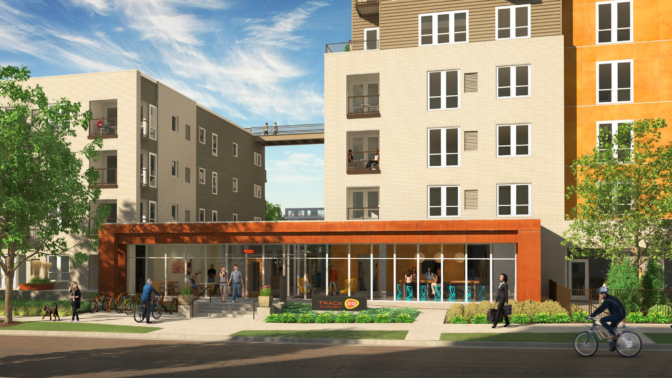Developers are on track to build a near-record number of rental apartments in the Twin Cities.
Through September, 3,920 new units have hit the market, 10 percent more than last year, according to a third-quarter report from Marquette Advisors. That doesn’t include more than a dozen rental projects reviewed this week by the Minneapolis Planning Commission, including two high-rise towers and half-dozen midsize buildings.
The flurry of new projects will help make 2018 what is expected to be the second-busiest year for apartment construction on record despite growing concerns about the depth of demand in some areas. To date, 2014 was the record with 4,451 new units.
“The mood is cautiously optimistic,” said Matthew Rauenhorst, vice president and general manager with Opus Development Co., which recently completed a luxury high-rise in downtown Minneapolis and is about to break ground on a luxury apartment building overlooking the Mississippi River.
Rauenhorst said that leasing progress has exceeded expectations at the downtown high-rise. He cites a healthy local economy and strong job growth as the primary drivers of additional demand, but a fully loaded pipeline of new proposals is reason for caution. “How many of these proposed projects will get built and when will they get built?” he said. “We will have to wait and see.”
So far, the market has remained resilient. Throughout the seven-county metropolitan area, the average vacancy rate was 2.3 percent at the end of September, up slightly from the previous quarter, but lower than a year ago, according to Marquette Advisors.
Factoring in properties still in lease-up, the adjusted-vacancy rate was up slightly month to month and year-over-year to 3.3 percent. The market is considered balanced between buyers and sellers when the vacancy rate is at 5 percent.
With vacancy rates still relatively low, rents are on the rise in some areas. Across the metropolitan area the average monthly rent was $1,188 in the third quarter, almost 3 percent higher than last year.
That annual gain is smaller than it has been in previous quarters, suggesting a gradual rebalancing of the market.
“The slowdown in rent growth relates to increasing competition and large numbers of units coming to market later in the year, when we typically experience a seasonal slowdown in leasing activity,” Marquette’s Brent Wittenberg said in a report. “Overall, the market remains quite healthy.”
Gina Dingman, president of Everest Real Estate Advisors, said a variety of factors are driving construction of smaller buildings. Those include more-permissive parking rules for smaller buildings, especially those in areas with mass transit, and a growing scarcity of parcels that are suitable for larger buildings. “And the price of dirt is just going up,” Dingman said.
The Twin Cities are bucking a national trend. Federal data show that multifamily building permits across the country have fallen monthly since March, suggesting a construction slowdown in the apartment sector over the next couple years.




